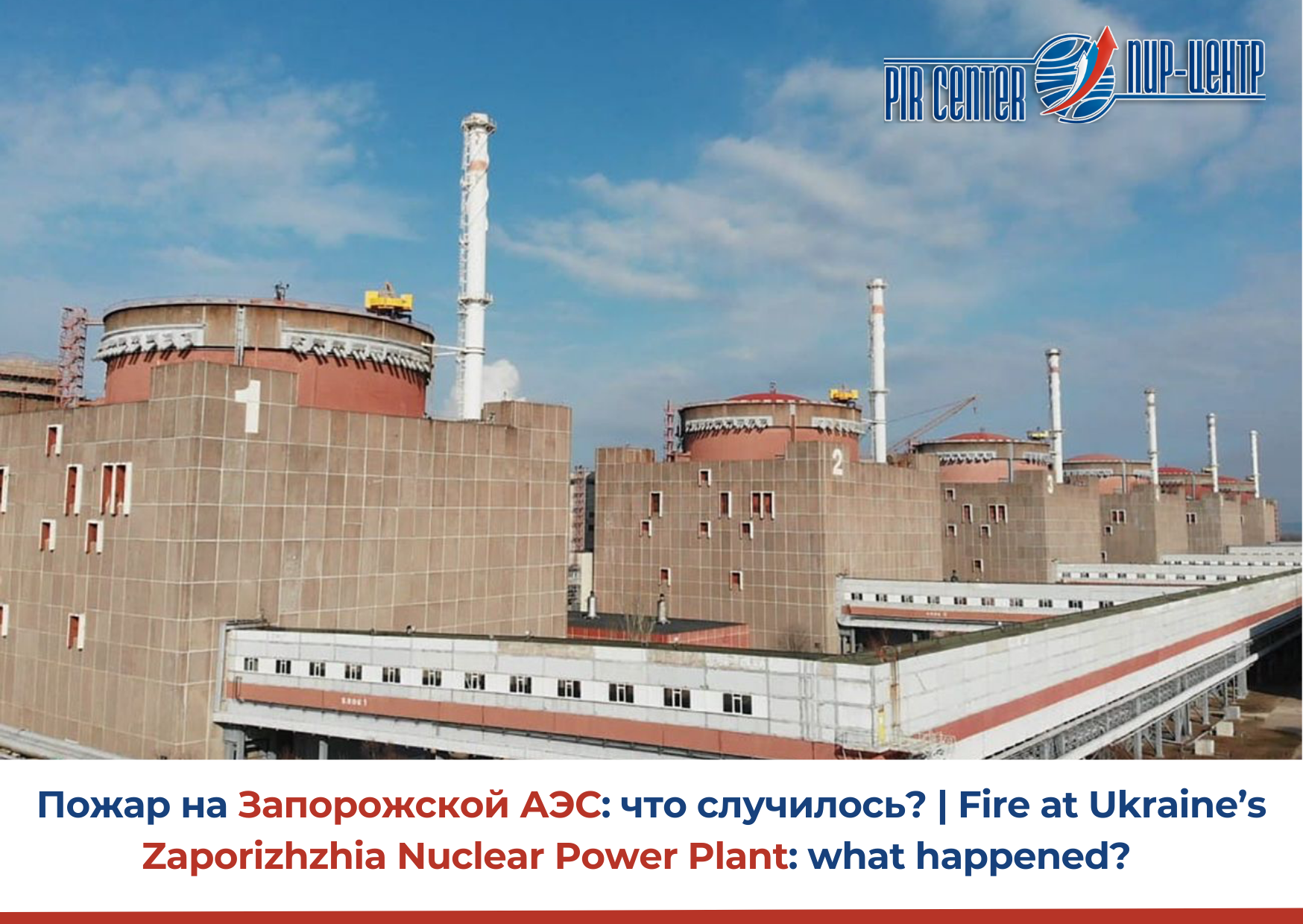On the night of March 3-4, reports about a potential nuclear threat posed by a Ukrainian nuclear power plant reappeared in the news. This time, the largest in Europe Zaporizhzhia NPP, located in the city of Energodar, got into the reports. According to the press service of the NPP, on the night of March 3 to 4, a fire broke out on the territory. The mayor of Energodar, Dmitry Orlov, announced a threat to the first power unit of the station, which was stopped a few days ago for scheduled repairs. Earlier, the Mayor’s office of Energodar reported that there was fighting near the station at night, as well as the presence of wounded. The State Inspectorate of Nuclear Regulation of Ukraine confirmed that the Zaporozhye NPP area was seized by the Russian military forces.
Andrey Tuz, a spokesman for the Zaporizhzhia NPP press service, added that nuclear fuel in the first power unit is still inside a nuclear reactor. Moreover, in the central hall there is a nuclear fuel refueling and soaking pool, which also contains assemblies with uranium and nuclear fuel. Tuz emphasized the danger of destruction of the hermetic shell. According to acting Chief State Inspector for Nuclear and Radiation Safety of Ukraine Oleg Korikov, there are seven nuclear installations, six power units and a nuclear storage facility at the Zaporizhzhia NPP. He confirmed that Unit 1 had previously been shut down for repairs, Units 2 and 3 had been safely shut down, and Unit 4 continued to operate. Power units 5 and 6 are standby and nothing threatens them.
Meanwhile, the situation at the station itself was quickly brought under control. According to the head of the Zaporizhzhia regional administration Alexander Starukh, Ukrainian firefighters were soon allowed into the station. The fire was localized, and by 6:20 (7:20 Moscow time) was eliminated. As it turned out, no damage was done to the first power unit, and the fire broke out only on three floors of the training building. The Ukrainian regulator told the IAEA that no increase in radiation levels was recorded on the territory of the Zaporizhzhia NPP, the plant’s equipment was not damaged, and the personnel were engaged in liquidation of the consequences.
It is not the first time that the coverage of acute events related to nuclear energy is used for information pressure: after the Chernobyl accident, the media reported some radiation background increase even before IAEA inspections.
This incident has instantly caused a wide international resonance. Ukrainian President Volodymyr Zelensky immediately contacted U.S. President Joe Biden, British Prime Minister Boris Johnson and IAEA head Rafael Grossi. The office of the British Prime Minister reported that Johnson intends to convene an emergency meeting of the UN Security Council over the incident at the Zaporizhzhia Nuclear Power Plant. Zelensky from his side issued an appeal, calling the incident “nuclear terror” on the part of Russia and urging Europe to prevent its own death from a disaster at a nuclear power plant.
PIR Center closely follows the events in Ukraine and invites you to read our publications on this topic.
We also invite you to get acquainted with today’s exclusive interview for PIR Center of Tarik Rauf, a member of Advisory Board of PIR Center, Ph.D. (Canada), on the current situation around Ukraine’s nuclear power plants.

